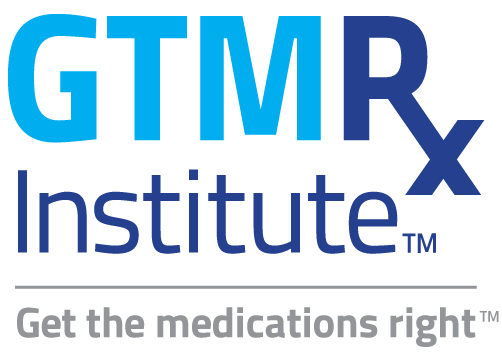 By Mark Loafman, MD, Chair, Family and Community Health, Cook County Health and Hospitals System
By Mark Loafman, MD, Chair, Family and Community Health, Cook County Health and Hospitals System
October 28, 2020
Putting CMM in practice: Getting it right
Optimal patient care requires optimal medication use. We know that instinctually in primary care, even when we haven’t been able to deliver on it.
Comprehensive medication management (CMM) allows us to deliver on it. CMM optimizes medical outcomes by ensuring medications are appropriately and effectively used. In doing so, it allows practices to transform how they deliver care, closing some dangerous gaps. (This is well documented: See the most recent GTMRx evidence document.1)
But how do we implement that in a sustainable way? How do we ensure alignment of CMM service to the needs of the practice? How do we bring the pharmacist into a primary care setting in a way that’s effective for everyone involved—payers, physicians, other clinicians, pharmacists and, most of all, patients?
That’s a huge question, and one we can’t answer in a mere blog post. But one way to approach it is by looking at what not to do.
A clunky status quo
The way we’ve been trying to manage medications hasn’t been working. We’re afraid to start a medication because of the safety issues. On the other side, achieving effectiveness is a heavy lift for most primary care practices. We have to add, change, substitute, probe, etc. That sort of complexity is outside the scope of what we’re trained to do as physicians. Now, we could figure it out if that was the only thing on our plate at the time, but in the current fee-for-service model, there’s no time for that.
Having nursing staff handle medication reconciliation helps, but usually, that amounts to asking patients whether they are taking their medications.
Let’s take the example of anticoagulation clinics. A patient comes in for their INR check and sees the pharmacist. Their A1c happens to be 12, and they’re out of their blood pressure meds. But what’s the pharmacist addressing at that visit? Only the INR. What a missed opportunity!
Fortunately, examples like this illustrate the need for CMM: When I explain it to people, they get it; they understand the nature of the problem.
But here’s what’s interesting: Other areas get medication management right. These are the kinds of things that are dealt with every day in the ICU, in cancer centers, heart failure centers, HIV centers, etc. Those places expect 95% to 100% success: We would never tolerate an ICU that got it right only half the time.
This isn’t really a new thing in medicine, but it is new to primary care practice. And it’s not the only thing.
The novelty of teams
When we talk about CMM in practice, we talk about teams. But let’s not forget that for many primary care practices, this may be a novel concept.
We see different workforce development approaches in primary care compared to specialty care. When you really drill down on why people tend to gravitate to specialty care, yes, there are lifestyle and reimbursement benefits, but I firmly believe a lot of it really comes down to teamwork; that you have teamwork.
In primary care, it can get lonely when we have to do everything ourselves. Of course, we can’t do everything, so things get deferred: I’m seeing that in my own clinics right now.
I was able to get a clinical pharmacist embedded who has ambulatory care residency training and who brings her own residents and pharmacy students along with my residency students. And those are universally seen to be the best clinical sessions that we have. Residents compete to get in those sessions: They want to be there when Molly, my pharmacist, is there with her team. The collaboration is just amazing.
CMM requires an interprofessional team with a division of labor based on expertise in therapeutics, skill sets, training and education.
So, for example: The physician solves difficult diagnostic dilemmas. From there, other team members step up, based on their areas of expertise.
The care plan is informed by lab data and clinical information at the point of care, as well as by other professionals as needed—social workers, nutritionists, etc. The physician and the clinical pharmacist collaboratively create the medication plan.
The result: better patient outcomes from medication optimization.
And that’s what constitutes value.
Value isn’t achieved by putting patients on medication nor is it measured as the revenue generated by CMM. If physician practices don’t think they will generate enough revenue to cover their costs, they won’t pursue the adoption and delivery of CMM services.
What matters financially is the total cost of care over time–which is directly related to improved outcomes.
In CMM, teams are rewarded for the value they provide.
Cui bono?
Historically, I think part of the challenge has been that the one who pays for this is not the one who benefits. So, if the primary care practice is investing in fewer, longer visits or having to pay the overhead of the pharmacists, and the savings go back to the insurance company, there’s a real disconnect. And I think so many of the primary care improvements that we could do are really held up specifically because of that.
Starting to get alignment between those who invest and those who benefit is crucial. Each entity, including the practice, needs to benefit. And while we’re not there yet, that’s one of the promises of CMM.
A common language, philosophy and practice
I’m a physician, so I’ve focused largely on practice management. It’s important to note that practice management is but one side of a triangle. The other two focus on fidelity of practice—having a common understanding and delivery of CMM.
CMM Philosophy of Practice: A set of professional values and beliefs held within a discipline that serves to guide an individual practitioner’s actions and behaviors and serves to instill trust in the care delivered.
CMM Patient Care Process: A common definition and approach to CMM delivery.2
Start small, focus on the pain points
I believe almost all the elements to make CMM work are in place. For all the other challenges to CMM success in practices, inertia may be the most intransigent. We just have this rigid, old model that isn’t working for us. We desperately need transformative change. CMM is the change we need. We just need to get started.
References:
[1] The Outcomes of Implementing and Integrating Comprehensive Medication Management in Team-Based Care: A Review of the Evidence on Quality, Access and Costs, June 2020
[2] Pestka DL, Sorge LA, McClurg MR, Sorensen TD. The Philosophy of Practice for Comprehensive Medication Management: Evaluating its Meaning and Application by Practitioners. Pharmacotherapy. 2018 Jan;38(1):69-79.

